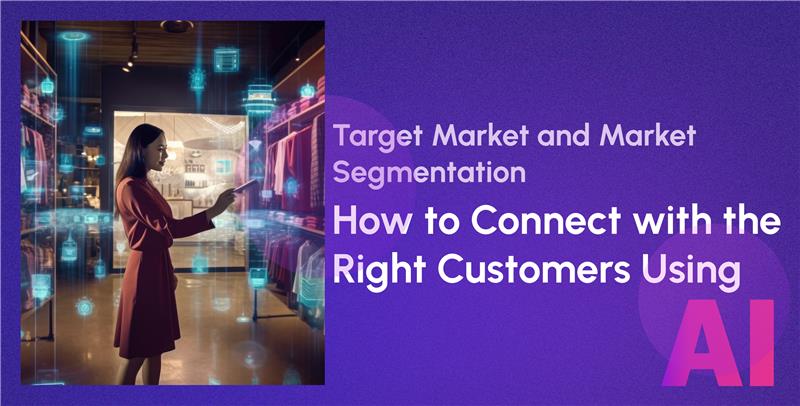

Organizations operating in the current rapid data-based business landscape exclude one-size-fits-all marketing strategies because they need targeted approaches. The delivery of customized, relevant experiences at the right time requires businesses to fully understand their target market and market segmentation methods.
The right applications of these strategies generate qualified customer relationships that build loyalty and produce revenue growth. Businesses that combine AIngage technology with their operations obtain both market understanding capabilities and meaningful customer engagement opportunities throughout the entire customer journey.
The target market represents those customers who match the design specifications of your business offerings. Your most potential buyers share characteristics such as needs, interests, behaviors, and demographics, which make them likely candidates to become your customers.
Businesses obtain multiple benefits by determining their target audience.
A fitness apparel brand chooses to market its products to health-conscious persons between 20–40 years old who seek performance excellence in addition to stylish products with sustainability in mind.
The initiation of market target identification merely starts your journey.
Market segmentation involves segmenting your entire target customer group into smaller, distinct segments according to their shared qualities.
The process enables you to develop specific product solutions as well as content and advertising strategies that align precisely with the requirements of individual market segments.
Common segmentation categories include:
Businesses achieve several advantages by effectively dividing their markets into separate customer groups.
The entire target market refinement process can be automated by AIngage through real-time analysis and artificial intelligence systems.
AIngage provides businesses with a platform that helps them understand and divide their target markets using the following steps:
True customer profiles created by AIngage derive from linked customer data sources, including site behavior and buying records, and social media database interactions, as well as email engagement metrics. Each profile delivers a complete understanding of the following details:
Businesses obtain instant customer behavior updates through real-time data to make evidence-based market decisions.
The machine learning algorithms at AIngage evaluate your customer data in order to detect specific groups among your entire target market audience. The AI-defined group segments utilize complex and subtle data associations that human analysts are likely to overlook.
Highly effective marketing strategies emerge through this approach, which targets below basic demographic profiles.
AIngage uses its market segmentation capability to produce customized recommendations, content items, and special offers that are specific to each identified customer group.
Every customer achieves a customized experience through the platform, starting from email communications to chatbot messages and in-app interactions, which produce a sense of personal connection.
Static methods characterize the conventional way of segmenting markets for marketing purposes. But customer behavior constantly evolves.
Real-time monitoring by AIngage of both engagement data and feedback enables automatic adjustments to your campaign strategies.
AIngage maintains automatic protocol adjustments that retool communication strategies once customer behavior modifications occur in designated segments.
The smart bots on AIngage use NLP-based technology to deal with customer inquiries through responses that understand the context of each interaction.
So bots determine segment membership for customers to offer recommendations and assistance that create a smooth personalized service path.
The current business landscape requires companies to both locate and provide solutions to their perfect customer segment because personalization has evolved past being optional into being a crucial expectation. Companies receive better customer interaction when they understand their audience's needs and communicate through their values, along with offering personalized solutions.
Organizations struggle to reach customers through their multiple digital channels because traditional marketing methods are no longer effective.
The business intelligence solution AIngage provides both automated systems management and targeted analytical findings to organizations.
The starting basis for strategic marketing starts with market segmentation work that helps businesses understand their target audience precisely. Real potentials become achievable when businesses use AI-based insights together with personalization and automated systems beyond mere information gathering.
AIngage empowers businesses to:
Organizations seeking to progress from guesswork to audience connections can find their solution in the all-inclusive capabilities of AIngage.